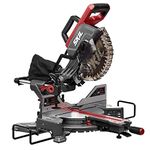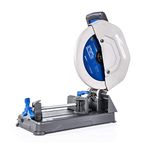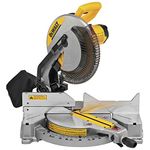10 bestMitre Sawsof December 2025
112M consumers helped this year.
5% off
1

DEWALT 20V MAX* 7-1/4-Inch Miter Saw, Cordless (DCS361M1)
DEWALT

9.9
9% off
2
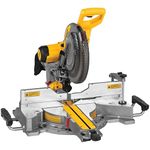
DEWALT Sliding Compound Miter Saw, 12-Inch (DWS779)
DEWALT

9.8
3

DEWALT 12-Inch Sliding Compound Miter Saw, Double Bevel (DWS780) , Black
DEWALT

9.6
4
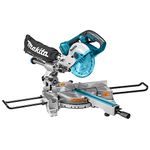
Makita DLS714Z 18V LXT Brushless Cordless 7-1/2" Compound Mitre Saw with ADT & Electric Brake (Tool Only)
Makita

9.4
19% off
5

DEWALT 20V MAX 7-1/4-Inch Miter Saw, Tool Only, Cordless (DCS361B)
DEWALT

9.2
OtherUp to 16% off
6
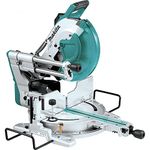
Makita LS1219L 12" Dual-Bevel Sliding Compound Miter Saw with Laser
Makita

8.9
17% off
7
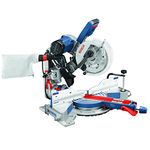
BOSCH CM10GD Compact Miter Saw - 15 Amp Corded 10 Inch Dual-Bevel Sliding Glide Miter Saw with 60-Tooth Carbide Saw Blade, Blue
Bosch

8.7
8
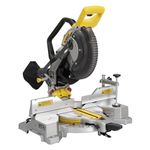
DEWALT 20V MAX XR 10 in. Double Bevel Fixed Miter Saw (Tool Only) (DCS714B)
DEWALT

8.5
9
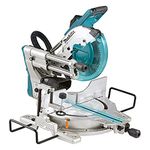
Makita LS1019 10" Sliding Compound Mitre Saw
Makita

8.2
10
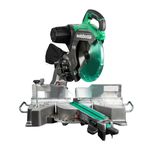
Metabo HPT 12-Inch Sliding Miter Saw, Dual Bevel, Xact Cut Shadow Line, 5-Year Warranty, C12RSH3
Metabo HPT

8.0
A Guide to Selecting the Best Mitre Saws
Choosing the right mitre saw can make a big difference in the quality and ease of your woodworking or DIY projects. Mitre saws are designed to make precise crosscuts and angled cuts in wood, plastic, or even metal, depending on the blade. When picking a mitre saw, it's important to think about the types of projects you plan to tackle, the materials you'll be cutting, and how much space you have in your workshop. Understanding the key features will help you select a saw that matches your needs and ensures safety, accuracy, and efficiency.
Blade Size
Blade size refers to the diameter of the saw blade, usually measured in inches. This is important because it determines the maximum width and thickness of material you can cut in a single pass. Common sizes are 8, 10, and 12 inches. Smaller blades are lighter and easier to handle, making them suitable for trim work and smaller projects. Larger blades can cut through thicker and wider materials, which is useful for bigger construction tasks. To pick the right blade size, consider the largest material you expect to cut regularly—choose a blade that can handle that size comfortably.
Mitre and Bevel Capacity
Mitre capacity is the range of angles the saw can cut horizontally, while bevel capacity is the range it can tilt vertically. These features are important for making angled cuts, such as for picture frames or crown molding. Some saws only mitre to one side, while others can do both (dual-bevel). If you often need to make complex or compound cuts, look for a saw with a wide mitre and bevel range. For basic straight or simple angled cuts, a single-bevel saw may be enough.
Sliding vs. Non-Sliding
A sliding mitre saw has rails that allow the blade to move forward and backward, increasing the width of material you can cut. Non-sliding saws are more compact but have a limited cutting width. Sliding saws are great if you need to cut wide boards or larger pieces, while non-sliding models are suitable for smaller, more precise work and take up less space. Think about the size of materials you usually work with to decide which type fits your needs.
Cutting Accuracy and Laser Guides
Accuracy is crucial for clean, professional-looking cuts. Some mitre saws come with built-in laser guides or LED shadow lines to help you see exactly where the blade will cut. These features are helpful for beginners or anyone who wants to speed up their workflow. If you value precision and want to reduce mistakes, look for a saw with a reliable guide system. If you’re experienced and comfortable marking your own lines, this may be less important.
Dust Collection
Cutting wood creates a lot of dust, which can be messy and harmful to breathe. Many mitre saws have dust collection systems, such as bags or ports for attaching a vacuum. Good dust collection keeps your workspace cleaner and safer. If you work indoors or in a small area, prioritize a saw with effective dust management. For occasional outdoor use, this feature may be less critical.
Portability and Weight
The weight and design of the mitre saw affect how easy it is to move and store. Lighter, more compact saws are easier to transport and set up, which is useful if you work on different job sites or have limited space. Heavier saws are usually more stable and may offer more features, but are harder to move. Consider how often you’ll need to move the saw and where you’ll use it most.
Best Reviews Guide Newsletter
Get exclusive articles, recommendations, shopping tips, and sales alerts
Sign up for our newsletter to receive weekly recommendations about seasonal and trendy products
Thank you for subscribing!
By submitting your email address you agree to our Terms and Conditions and Privacy Policy
